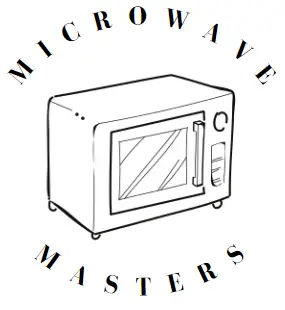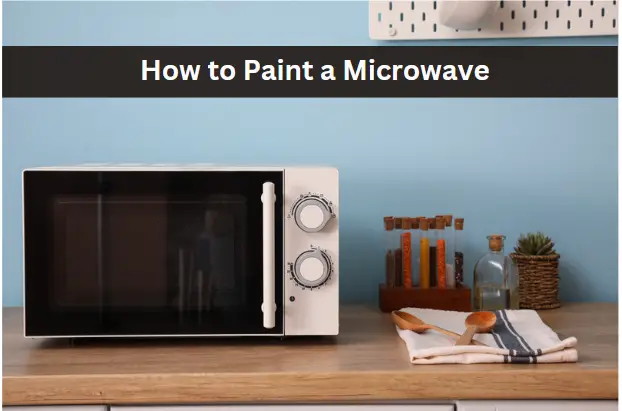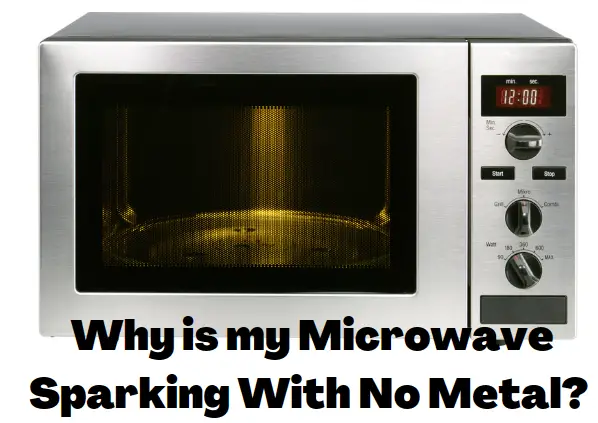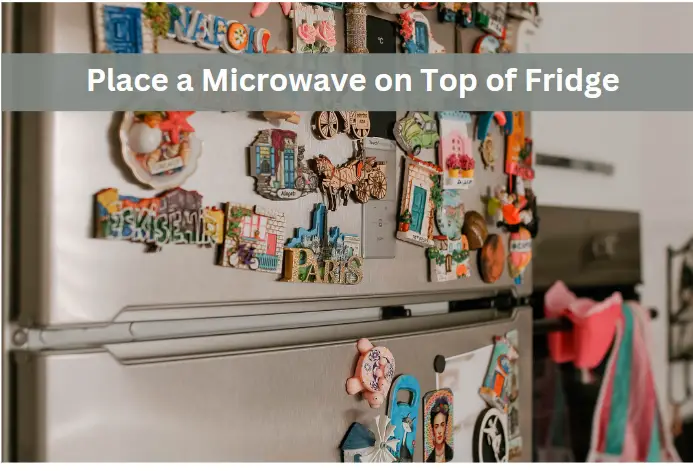How Hot Does a Microwave Get? Discover the Temperature Limit of Your Kitchen Appliance!
Microwaves are one of the most common kitchen appliances that have revolutionized the way we cook and heat food. They are quick, convenient, and easy to use. However, have you ever wondered how hot a microwave can get? In this article, I will explore the topic of how hot a microwave can get and the factors that affect microwave heating.
Understanding microwaves is essential to know how hot they can get. Microwaves use electromagnetic radiation to heat food by exciting the water molecules in the food. The waves penetrate the food and cause the water molecules to vibrate, generating heat. The heating process in a microwave is different from that of a conventional oven, which uses convection to heat food.
Factors affecting microwave heating include the power of the microwave, the size and shape of the food, and the moisture content of the food. These factors can affect how evenly the food is heated and how hot it gets. It is essential to understand these factors to ensure that your food is heated safely and evenly in a microwave.
Key Takeaways
- Microwaves use electromagnetic radiation to heat food by exciting the water molecules in the food.
- The power of the microwave, the size and shape of the food, and the moisture content of the food are factors that affect how hot the food gets in a microwave.
- Understanding these factors is essential for safe and even heating of food in a microwave.
Understanding Microwaves
As someone who enjoys using a microwave to quickly heat up food, I’ve always been curious about how they work. After doing some research, I’ve come to understand the basics of microwaves and their heating process.
Electromagnetic Waves
Microwaves are a type of electromagnetic wave that falls between radio waves and infrared radiation on the electromagnetic spectrum. These waves have a frequency of around 2.45 GHz, which is why most microwaves operate at this frequency.
Microwave Energy
Microwaves produce energy that can be absorbed by certain materials, such as food. This energy causes the water molecules in the food to vibrate rapidly, which in turn generates heat. It’s important to note that not all materials can absorb microwave energy, which is why some dishes are not microwave-safe.
How Microwaves Work
Microwaves are produced by a device called a magnetron, which converts electrical energy into microwave energy. This energy is then transmitted through a waveguide and into the microwave oven, where it is absorbed by the food.
To ensure that the microwaves are contained within the oven, the walls of the oven are made of metal and there is a metal screen on the door. This prevents the microwaves from escaping and potentially causing harm.
Overall, understanding how microwaves work has given me a greater appreciation for this convenient kitchen appliance. By using the right materials and following proper safety precautions, microwaves can be a safe and efficient way to heat up food.
Heating Process in a Microwave
Microwaves are a staple in most kitchens, and they are used to heat food quickly and efficiently. But how exactly does a microwave heat food? In this section, I will explore the heating process in a microwave and the role of water molecules in this process.
Role of Water Molecules
Water molecules play a crucial role in the heating process of a microwave. When food is placed in a microwave, the microwaves cause the water molecules in the food to vibrate rapidly. This rapid vibration generates heat, which in turn heats up the food.
The amount of heat generated depends on the number of water molecules in the food. Foods with a high water content, such as soups and stews, heat up faster than foods with a low water content, such as bread and crackers.
Heat Generation
The heat generated in a microwave is not evenly distributed throughout the food. The outer layers of the food heat up faster than the inner layers. This is because the microwaves penetrate only a few centimeters into the food before being absorbed by the water molecules.
To ensure that the food is heated evenly, it is important to stir or rotate the food during the heating process. This will help distribute the heat more evenly throughout the food.
Inside Out Heating
One of the unique features of microwave heating is that it heats the food from the inside out. This is because the water molecules in the center of the food are heated first, and then the heat is transferred to the outer layers of the food.
This inside-out heating can be beneficial for certain foods, such as potatoes and other vegetables, which can be cooked quickly and evenly in a microwave.
In conclusion, the heating process in a microwave is a complex process that relies on the rapid vibration of water molecules to generate heat. Understanding this process can help you use your microwave more efficiently and effectively.
Factors Affecting Microwave Heating
Microwaves are a convenient and fast way to heat up food, but there are several factors that affect how hot the food gets. In this section, I will discuss the most important factors that affect microwave heating.
Power Level
The power level of a microwave determines how quickly and evenly the food gets heated. Most microwaves have several power levels, ranging from low to high. The higher the power level, the faster the food will get heated. However, a high power level can also lead to uneven heating, especially for larger or thicker foods.
Microwave Wattage
The wattage of a microwave is another important factor that affects how hot the food gets. Microwaves with higher wattage can heat up food faster and more evenly than those with lower wattage. For example, a 1000-watt microwave will heat up food faster than a 700-watt microwave.
Size and Shape of the Food
The size and shape of the food also affect how hot it gets in the microwave. Smaller or thinner foods will heat up faster and more evenly than larger or thicker foods. It is also important to arrange the food in the center of the microwave and not to stack it too high, as this can lead to uneven heating.
Moisture Content
The moisture content of the food is another important factor that affects how hot it gets in the microwave. Foods with high moisture content, such as vegetables and soups, will heat up faster and more evenly than dry foods, such as bread or crackers. It is also important to cover the food with a lid or microwave-safe plastic wrap to prevent moisture loss and to stir or rotate the food periodically to ensure even heating.
In summary, the power level, microwave wattage, size and shape of the food, and moisture content are all important factors that affect how hot food gets in the microwave. By understanding these factors and adjusting them accordingly, you can ensure that your food gets heated up quickly and evenly in the microwave.
Temperature in a Microwave
As a microwave assistant, I am excited to share with you some important information about the temperature in a microwave. In this section, I will cover the maximum temperature that a microwave can reach, the boiling point of water, and a microwave temperature chart.
Maximum Temperature
Contrary to popular belief, microwaves don’t actually get hot. Instead, they heat up the food that is placed inside of them. The maximum temperature that microwaves can reach is 212 degrees Fahrenheit (100 degrees Celsius) 1. However, it is important to note that not all parts of your food or liquid will heat up evenly. Microwaves work by exciting water molecules in the food or liquid, which generates heat 2.
Boiling Point
The boiling point of water is 212 degrees Fahrenheit (100 degrees Celsius) 1. This means that the maximum effective temperature that food or liquids can reach in a microwave is the boiling point of water. It is important to be cautious when heating liquids in a microwave, as they can become superheated and cause injury if not handled properly 3.
Microwave Temperature Chart
A microwave temperature chart can be a useful tool to determine how long to cook or reheat different types of food in a microwave. The microwaved food’s moisture could be heated to an internal temperature of 212°F (100°C) 1. However, it is important to note that different foods may require different cooking times and power levels in a microwave. It is also important to follow any instructions that come with the food or microwave to ensure safe and effective cooking 14.
In conclusion, understanding the temperature in a microwave can help you safely and effectively cook or reheat food. Remember that the maximum temperature that microwaves can reach is 212 degrees Fahrenheit (100 degrees Celsius), and always be cautious when heating liquids in a microwave. Use a microwave temperature chart as a guide, but be sure to follow any instructions that come with the food or microwave for safe and effective cooking.
Safety and Care of Microwaves
Microwaves are convenient and fast kitchen appliances that many of us use on a daily basis. However, it is important to use them safely and with care to avoid accidents or damage to the appliance. In this section, I will discuss some important safety measures and features that you should be aware of when using a microwave.
Overheating and Shut Down
One of the most common concerns with microwaves is overheating. While microwaves are designed to heat food quickly, they can also overheat if they are used improperly or if there is a malfunction. If a microwave overheats, it can shut down to prevent damage or even catch fire.
To avoid overheating, make sure that you only use microwave-safe containers and avoid heating foods that are not meant to be microwaved. Additionally, do not run the microwave for too long or use it to heat large quantities of food at once. If your microwave does overheat and shut down, unplug it and let it cool down before using it again.
Ventilation and Air Circulation
Another important safety concern with microwaves is proper ventilation and air circulation. Microwaves generate heat, and if that heat is not properly ventilated, it can cause damage to the appliance or even start a fire.
To ensure proper ventilation, make sure that your microwave is not blocked by other appliances or objects. Additionally, make sure that the vents on the microwave are not covered or blocked in any way. If you notice that your microwave is not ventilating properly, unplug it and have it serviced by a professional.
Safety Features
Finally, it is important to be aware of the safety features that are built into most microwaves. These features can help prevent accidents or damage to the appliance.
One important safety feature is the automatic shut-off. This feature will turn off the microwave if it is left running for too long or if it detects a problem. Another important safety feature is the child lock, which prevents children from accidentally turning on the microwave or changing the settings.
By being aware of these safety measures and features, you can use your microwave with confidence and avoid accidents or damage to the appliance.
Microwave Vs Conventional Oven
When it comes to cooking, there are two main types of ovens: conventional ovens and microwave ovens. Both types of ovens have their own strengths and weaknesses, and it’s important to understand the differences between them to determine which one is best for your cooking needs.
Heat Distribution
One of the main differences between a conventional oven and a microwave oven is the way they distribute heat. Conventional ovens use radiant heat to cook food, which means that the heat is distributed evenly throughout the oven. This allows for more even cooking and browning of food.
Microwave ovens, on the other hand, use microwaves to heat food. These microwaves penetrate the food and cause the water molecules in the food to vibrate, which generates heat. This means that the heat is not distributed evenly throughout the food, which can result in uneven cooking.
Cooking Time
Another major difference between conventional ovens and microwave ovens is cooking time. Conventional ovens generally take longer to cook food than microwave ovens. This is because the radiant heat in a conventional oven takes longer to penetrate the food and cook it thoroughly.
Microwave ovens, on the other hand, cook food much faster than conventional ovens. This is because the microwaves penetrate the food and cook it from the inside out, which can significantly reduce cooking time.
Conversion to Convection
If you want the best of both worlds, you can consider a combination microwave-convection oven. This type of oven combines the quick cooking of a microwave with the even heating of a convection oven. Convection ovens use a fan to circulate hot air around the food, which helps to cook it evenly.
In conclusion, both conventional ovens and microwave ovens have their own unique strengths and weaknesses. If you’re looking for even cooking and browning, a conventional oven may be the best choice. If you’re looking for quick cooking and convenience, a microwave oven may be the way to go. And if you want the best of both worlds, a combination microwave-convection oven may be the perfect solution.
Common Misconceptions About Microwaves
Microwaves are a common kitchen appliance that many of us use on a daily basis. However, there are several misconceptions about them that I’d like to clear up. Here are a few of the most common misconceptions about microwaves:
Microwaves and Metal
One of the most persistent misconceptions about microwaves is that they cannot be used to heat metal. While it is true that metal should not be placed inside a microwave, it is not because the microwaves themselves are harmful. Rather, metal objects can cause sparks to fly, which can damage the microwave or even start a fire. This is because the microwaves cause electrical currents to flow through the metal, which can create a dangerous buildup of energy.
Superheated Water
Another common misconception about microwaves is that they can cause water to become superheated, which can result in an explosion when the water is disturbed. While it is true that this can happen, it is not a common occurrence. In order for water to become superheated, it must be heated in a very clean container, without any impurities or air bubbles. When the water is disturbed, these impurities can cause the water to rapidly boil and explode. However, as long as you are careful when heating water in the microwave, this is not something that you need to worry about.
Microwaves and Food Quality
Finally, there is a common misconception that microwaving food can cause it to lose its nutritional value or taste. While it is true that some foods may not be as tasty when microwaved, this has more to do with the way that the food is cooked than with the microwaves themselves. For example, microwaving can cause some foods to become soggy or rubbery, while others may become dry or tough. However, as long as you are careful when microwaving your food and use appropriate cooking times and power levels, you can still enjoy delicious and nutritious meals.
In conclusion, there are several misconceptions about microwaves that are simply not true. By understanding how microwaves work and how to use them safely, you can enjoy all of the benefits that they have to offer without worrying about any potential dangers or drawbacks.
Frequently Asked Questions
What is the maximum temperature a microwave can reach?
Microwaves can heat up food to a maximum temperature of around 212°F (100°C), which is the boiling point of water. However, the temperature can vary depending on the moisture content, density, shape, size, and microwave wattage of the food being heated.
How quickly can a microwave heat up food?
Microwaves can heat up food very quickly. In fact, most foods can be reheated to a temperature of 100°C (212°F) or above within 2 minutes in a microwave.
What is the average temperature of a microwave on high?
The average temperature of a microwave on high can vary depending on the wattage of the microwave. However, most microwaves have a maximum power output of 1000 watts, which can heat up food to a temperature of 100°C (212°F) or above within a few minutes.
What is the temperature range of a 1000 watt microwave?
A 1000 watt microwave can heat up food to a temperature range of 100°C (212°F) or above within a few minutes. However, the temperature can vary depending on the moisture content, density, shape, size, and wattage of the food being heated.
How long does it take for a microwave to reach its maximum temperature?
Most microwaves can reach their maximum temperature within a few minutes, depending on the wattage of the microwave and the type of food being heated.
What is the shortest amount of time it takes for a microwave to heat up food?
The shortest amount of time it takes for a microwave to heat up food can vary depending on the wattage of the microwave and the type of food being heated. However, most foods can be reheated to a temperature of 100°C (212°F) or above within 2 minutes in a microwave.




